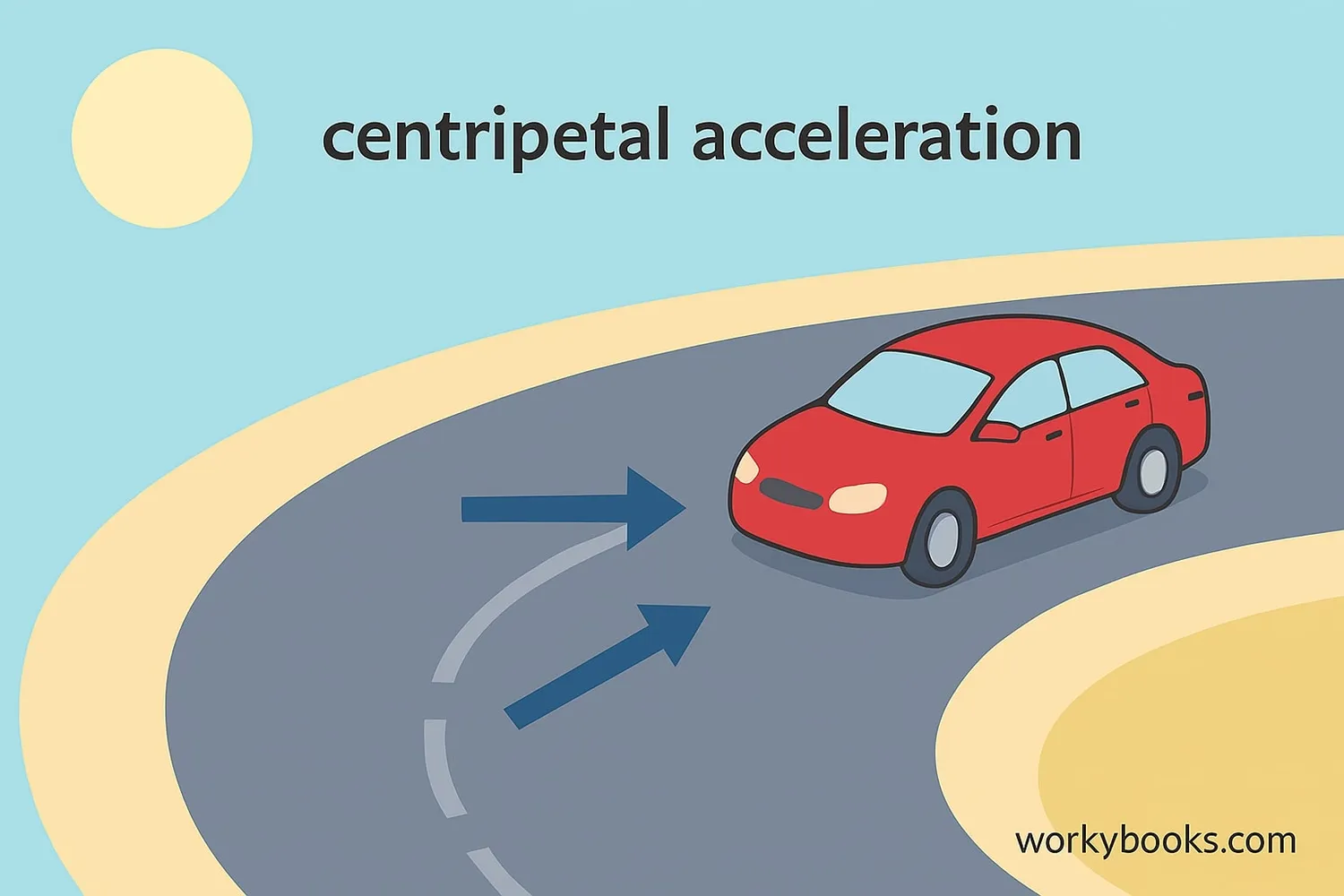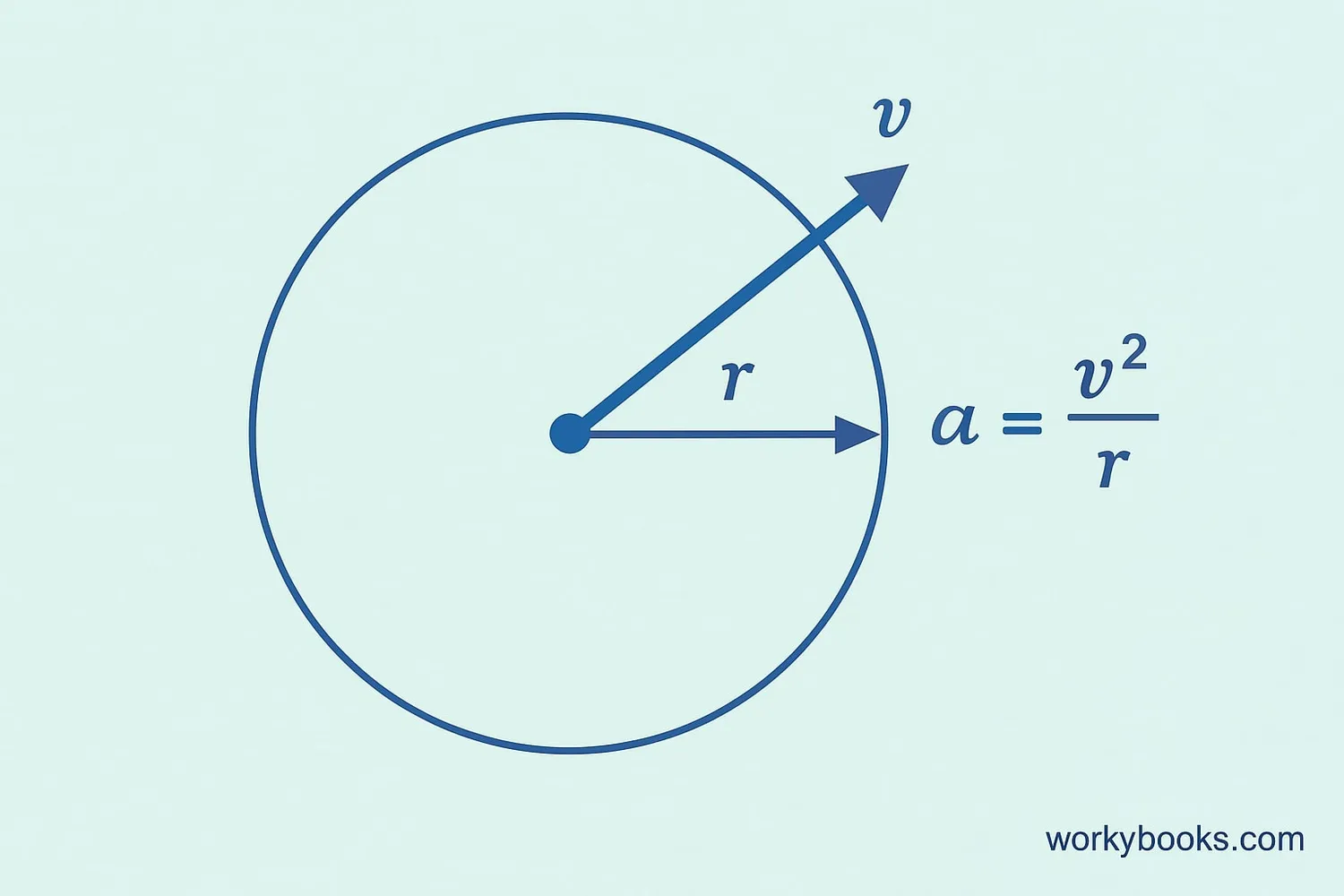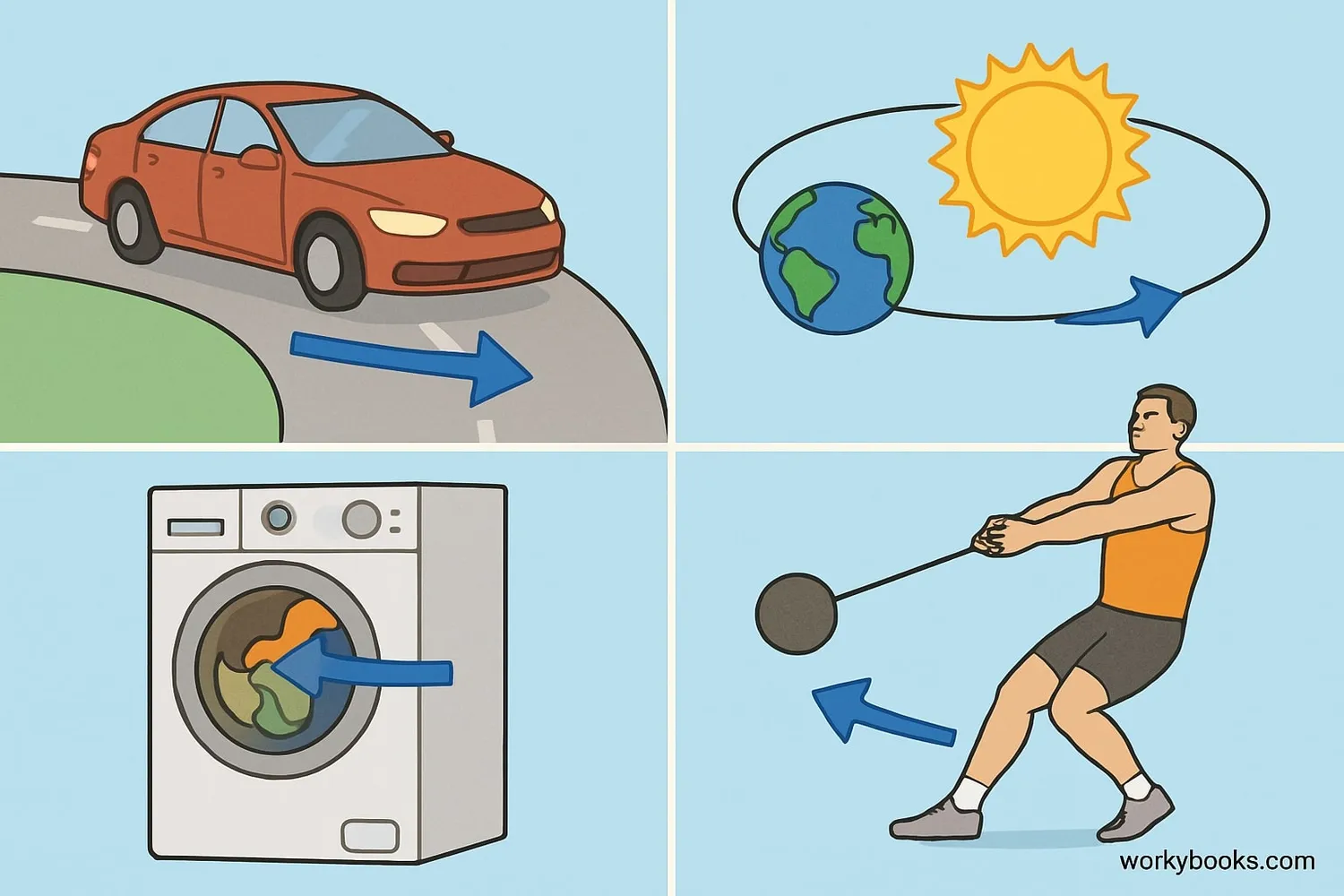Centripetal Acceleration - Definition, Examples, Quiz, FAQ, Trivia
Discover the force that keeps things moving in circles!
What is Centripetal Acceleration?

Centripetal acceleration is the acceleration that makes an object move in a circular path. The word "centripetal" comes from Latin words meaning "center seeking." This acceleration always points toward the center of the circle.
When something moves in a circle, it's constantly changing direction. Even if the speed stays the same, the change in direction means it's accelerating. This acceleration toward the center is what keeps objects moving in circular paths instead of flying off in a straight line.
Direction
Always points toward the center of the circular path
Circular Motion
Required for any object moving in a circle
Constant Change
Even at constant speed, direction is changing
Physics Insight!
Centripetal acceleration is not a new kind of acceleration - it's just the name we give to acceleration when it points toward the center of a circular path.
The Centripetal Acceleration Formula

The formula for centripetal acceleration is:
Where:
• a = centripetal acceleration (m/s²)
• v = velocity or speed (m/s)
• r = radius of the circular path (m)
This formula tells us that centripetal acceleration increases when:
1. The speed increases (faster movement)
2. The radius decreases (tighter turn)
Units Matter!
Centripetal acceleration is measured in meters per second squared (m/s²), just like regular acceleration. The radius is in meters (m), and velocity is in meters per second (m/s).
Real-World Examples

Centripetal acceleration is all around us! Here are some common examples:
Turning a Corner
When a car turns, friction provides the centripetal force that creates acceleration toward the center of the turn
Planetary Orbits
Earth's orbit around the sun is maintained by gravitational force creating centripetal acceleration
Spinning Rides
Amusement park rides like roller coasters and spinning wheels rely on centripetal acceleration
Try This!
Fill a bucket with water and swing it in a vertical circle. The water doesn't spill out because centripetal acceleration pushes it against the bottom of the bucket!
Centripetal Acceleration Quiz
Test your understanding with this quiz! Answer all 5 questions to see how much you've learned.
Frequently Asked Questions
Here are answers to common questions about centripetal acceleration:
Fascinating Centripetal Acceleration Facts
Discover some amazing physics facts about circular motion!
Space Travel
Astronauts experience centripetal acceleration during launches and re-entries that can reach up to 3-4 times Earth's gravity!
Animal Physics
Dragonflies experience centripetal accelerations of up to 30g (30 times Earth's gravity) when making sharp turns during flight!
Race Car Physics
Formula 1 drivers experience up to 5g of centripetal acceleration during sharp turns - meaning they feel five times heavier!
Historical Discovery
Christiaan Huygens derived the first mathematical formula for centripetal acceleration in 1659, over 30 years before Newton published his laws of motion!


